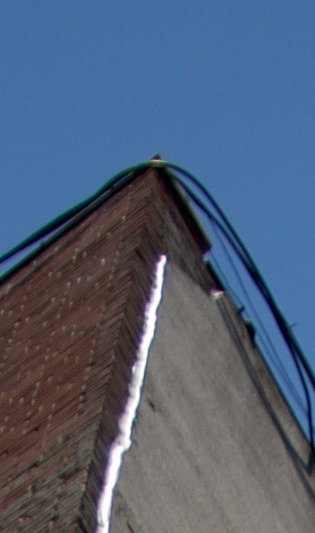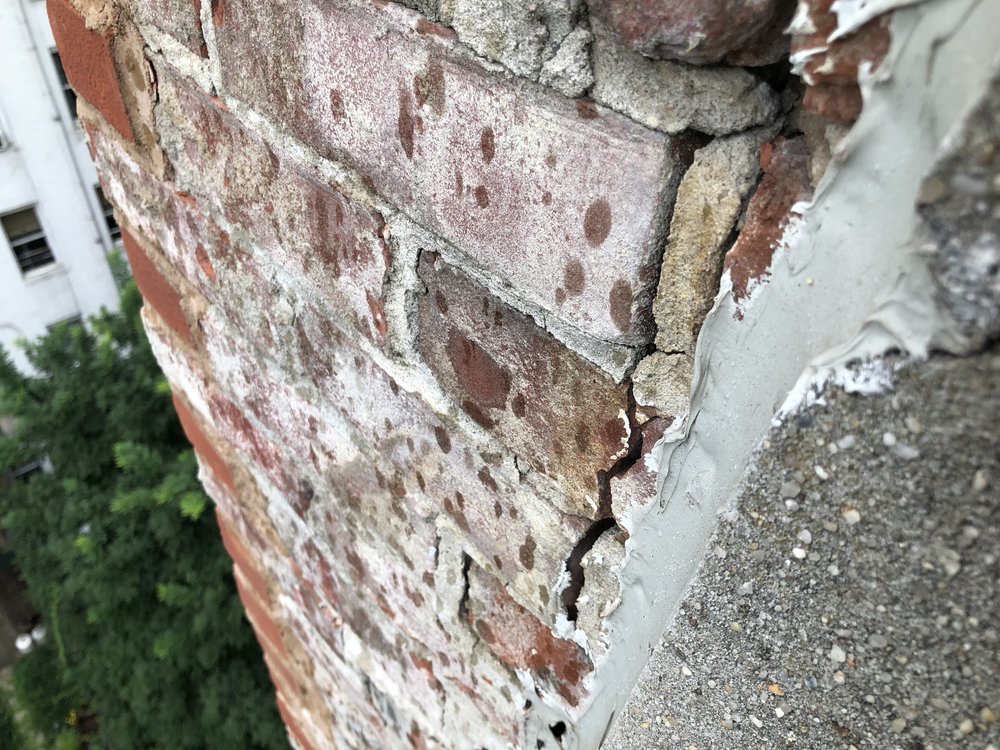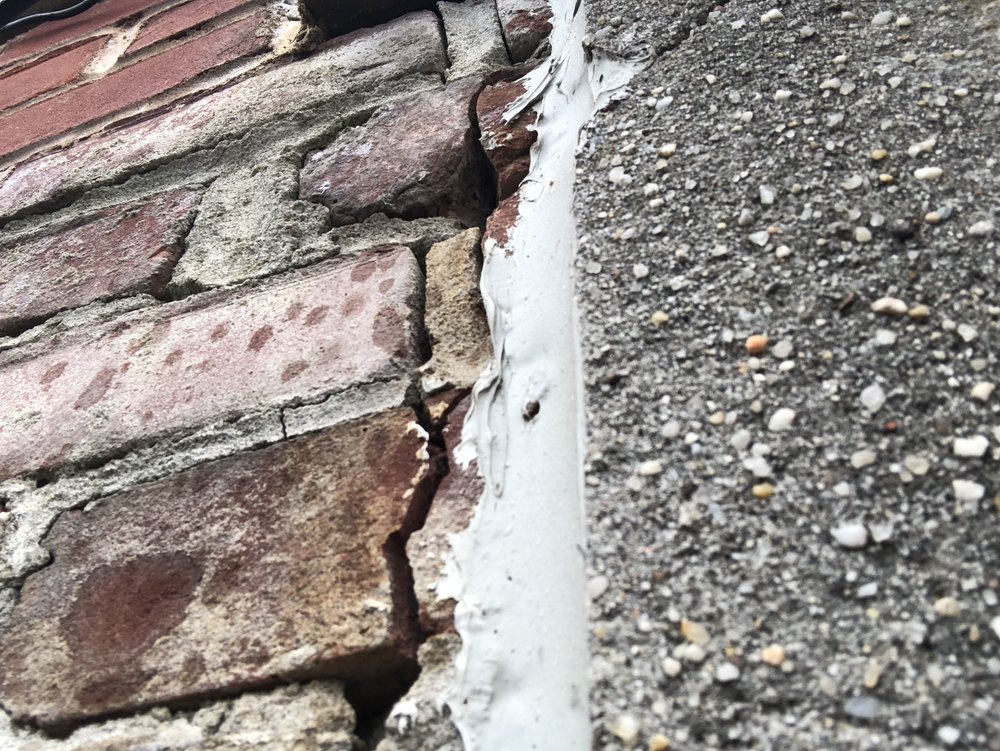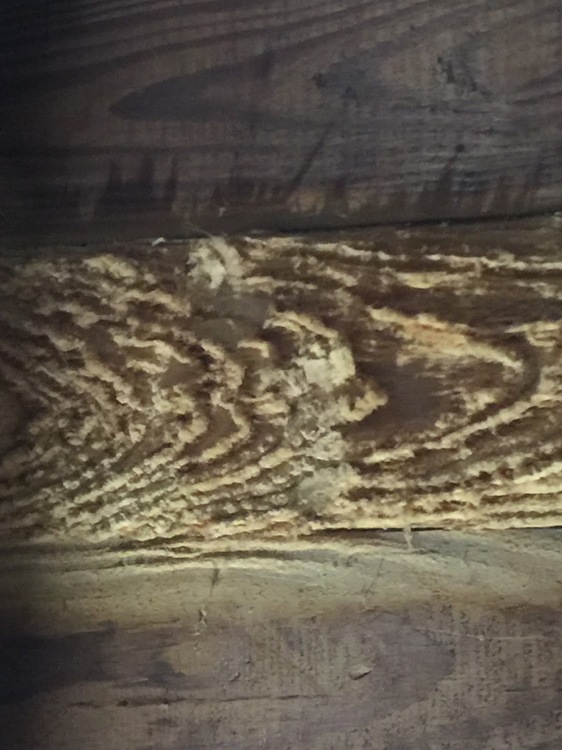
pm124
Members-
Posts
40 -
Joined
-
Last visited
Content Type
Profiles
Forums
Articles
News for Home Inspectors
Events
Blogs
Gallery
Store
Downloads
Everything posted by pm124
-
It is the same one. How you imported that into this thread is amazing.
-
We have a 120 year old building with a crack in the wall. We hired an inspector to look at it because we do not trust just hiring contractors. He recommended that we just reach down to it from the roof with a caulk gun and fill the with caulk. That is, put caulk in the gap formed in the mortar and in the gaps spanning the bricks. Moreover, the crack runs right next to where some other idiot decided to slap caulk on the outside of our building. This all seemed unbelievably foolish to me. Is there any merit to this claim?
-
Looking for someone to inspect a 1925 house. Thanks!
-
Thanks much everyone! a portion of it is a parapet, but the crack extends down into the building itself. The crack does not run all the way down the caulk line. I think that the only existing picture of the work is the picture from the bottom up.
-
Thanks John. That was my thinking. The stucco on the right is the old surface that was removed from the brick. Engineers did inspect the wall prior to the crack. That was about a year ago. I'm sure that not much has changed then other than the crack. They should have addressed the loose mortar. The walls are protected from draining water, but the stucco absorbs some. Here is a picture taken from today. There was some light rain. You can also see the appropriate repair with soft mortar on the corner bricks, which was done by the same company. The building was in pretty bad shape, but they did a $200,000+ job for a fairly small square footage of work (6 story building, 12 1/2 Ft wide). Would think that they would have removed more of the stucco to see what is underneath and wouldn't have used caulk.
-
Thanks Bill! But how do you explain how: 1. The crack perfectly follows the line of the caulk from the top to the bottom, and how the crack involves both brick and mortar? 2. The crack was not present 1 year ago prior to the application of the caulk, and appeared after the application of the caulk? Also, is this serious? It does not completely cross all layers of brick. It is not obvious to me how one would repair this.
-
Here is a video on how this happens
-
-
-
Thanks John! Nope, I'm suggesting that the brick and mortar absorbed water which froze behind the caulk and caused expansion, thus causing the brick to crack. The crack is perfectly along the caulk line. Here is a photo of the building and a detail of the area.
-
Hi all--I have been trying to get a better picture. This isn't a chimney. It is actually a wall. The sealant joint was done by a contractor after they removed the cement from the outer portion of the brick. It sure looks like that is what caused the crack, because the crack follows the sealant all the way down the wall. It is very difficult to get a good picture because I can't get into the neighboring building without trespassing onto their roof.
-
Hi all, Our building recently had an exterior wall partially rebuilt. This is a 6 story building constructed around 1900 brick and mortar. A contractor was hired before I moved in. As I understand it, the project was to remove material from the outside of the build and repoint. As I understand it, it went from a $100,00 repoint to a $260,000 project. In the course of this project, they ignored the side of the building. Instead, it appears that they removed some cement covering the brick and then put caulk between the cement and the brick. The wall subsequently developed large cracks A winter has passed between the completion of the work and the time of these pictures. Do you think the caulk could have caused this cracking? Is this serious? What actions would you take? thank you!!
-
Hi everyone. I have a flat roof with bitumen that is about 4 years old. There are blisters and uneven surfaces. While it is not obviously leaking, the interior attic is warm and sprayed with closed cell foam, making leaks difficult to detect. There are multiple points where water can come in. I have a quote for a roofer who wants to cut and nail the blisters, nail down insulation to make it even, and then cover with a new layer of bitumen and aluminum paint. I would like a surface that has the highest possible life expectancy (though I don't mind repainting every few years). Is there a better option? What approach would you take? Thanks so much in advance!!
-
Well, whatever it is, it is definitely weird. There is a LOT of dust. And it seems to be spreading in real time (days, not years). I'm going to try to spray it with Timbor because it is cheap and non-toxic. The dust could be obscuring the holes. Not sure what else to do except spray it with fungicide next.
-
I did. The wood is solid, but has a LOT of sawdust on the underside. So much that it is difficult to sweep it down to the wood. I don't see any bore holes from insects, but there is a lot of dust there. It is as if someone is sneaking in and sanding the underside of the wood. It is just part of one plank.
-
Thank you so much!! For some reason, the system did not notify me of a response. It is in an unconditioned garage, 90 years old, hardwood. The surface has been exposed since the garage was constructed. It's damp in there, and firewood was brought in and left nearby. 1 plank infected. I can sweep off the dust and have a look to see whether there are holes. I was thinking powder beetle, but haven't removed the dust.
-
Thanks Kurt! I stuck my hand in the mortar powder, and it was fine grain...very little sand. I wasn't happy with it. But he was scaffolded up, and I wanted the job done. Hopefully, it will blend as time goes on. I don't see how he could have charged $7500 and had a $2000 laboratory analysis done on the mortar in the process. Once again, thanks all. What a wonderful forum you have!! If anyone needs medical advice...I'm happy to give it. :- ) If I had been a little bit more complete in my due diligence, I would have uncovered http://www.yellowpages.com/jackson-heights-ny/mip/c-m-roofing-483900448, which were made before Google Reviews or Yelp.
-
Hi Kurt, That's what we ended up doing. Thanks much for the advice. It was the same advice that our lawyer friends gave us. Essentially, we ended up being convinced that we were being played. The owner of the company, Bob, said that the top lintel had cost them the equivalent of an extra day of work, which is why the price was doubled, and that now he would lose money on the job. The guy was super nice, and held his cool during the discussion. His brother in law (who looks like he might have killed a few men in his time) was throwing his keys and bunching up his fists and acting scary. Bob changed parts of his story a number of times, but essentially stuck with the central story that the top lintel was C-shaped and welded to another beam and he had to spend a lot of time getting it out. The workers who actually did the work (and only spoke Chinese) said that it was nothing too unusual. His response to this was that we didn't have a right to be speaking with his workers, and anyway they were just trying to keep us from worrying about the house. We agreed that we would pay more if an independent assessor would come in, scope the inside of the wall, and tell us that it was worth $7500 to remove the lintel. He said he would send us pictures of the unusual lintel and also send us other relevant documentation, such as proof that the mortar was laboratory tested and matched for landmarks and that he had a DOB permit, insurance, and all of that. (We were stupid enough not to request documentation of this before the job, though there was an email to Landmarks that he was cc'ed in on and responded to.) If he can do all of this, we are happy to pay whatever someone thinks the extra work was worth. In the meantime, we paid what they contract asked us to pay. Regarding the membrane flashing, he stated he did. He was not able to provide the specific information on the flashing to see whether it was to code (if used at all). We see no weep holes. We could not see any either on the ground materials or in the air. They repaired some bricks with mortar. New pictures added. https://goo.gl/photos/Vw3hw22oMtpHgnv87 MJR--He also did some work on our slate roof. He said that he had to put up an extra scaffolding to access the roof. We didn't see any such a scaffolding (do you from the pictures?)
-
Thanks you so much as always Kurt!! I think you are right as he hasn't showed me his permit. He says he is licensed and insured but I'm starting to doubt it. He was supposed to get landmarks clearance too. I guess I should have confirmed all of that. I suppose it makes us both liable.







